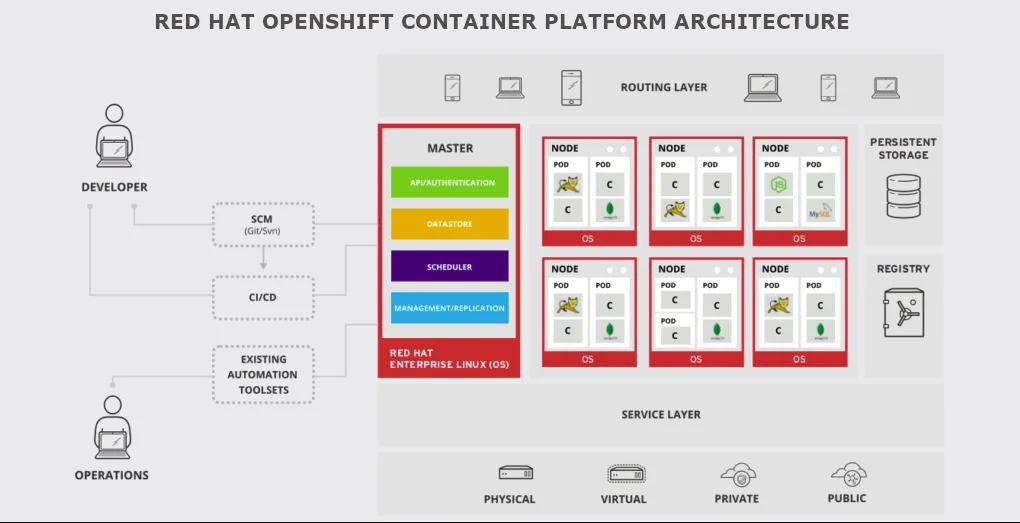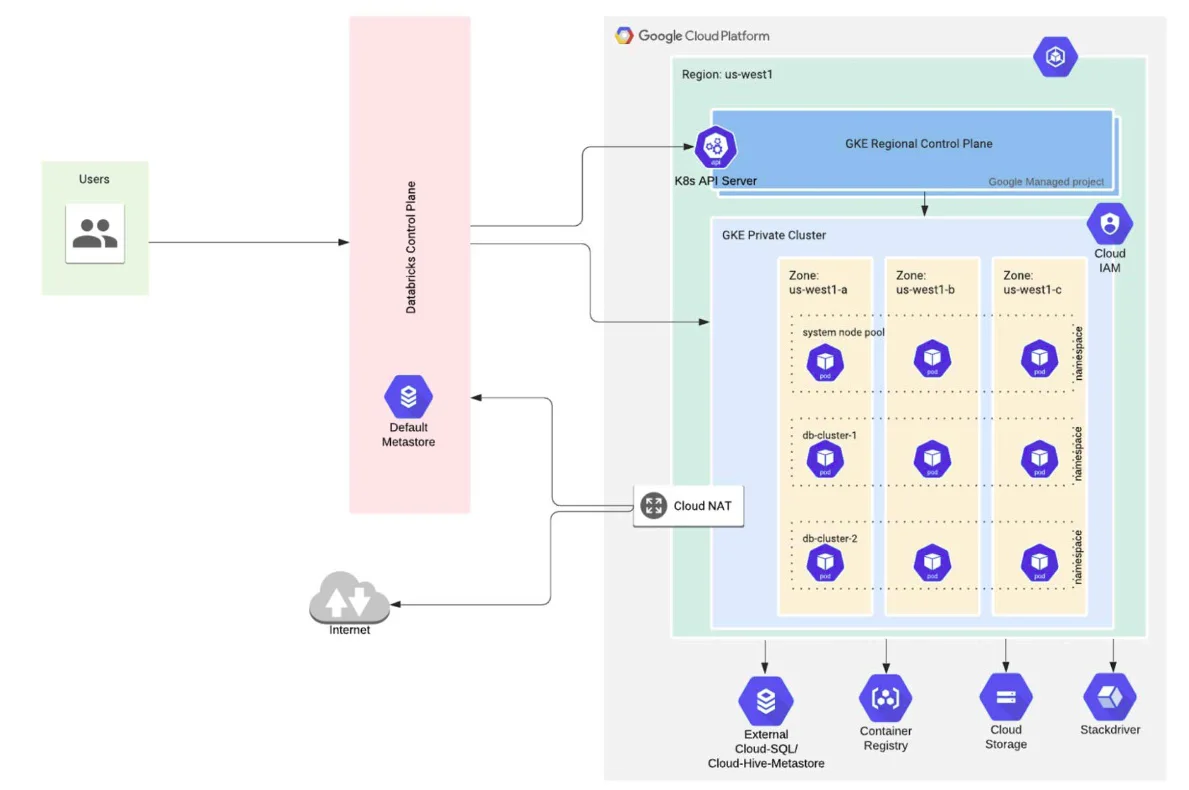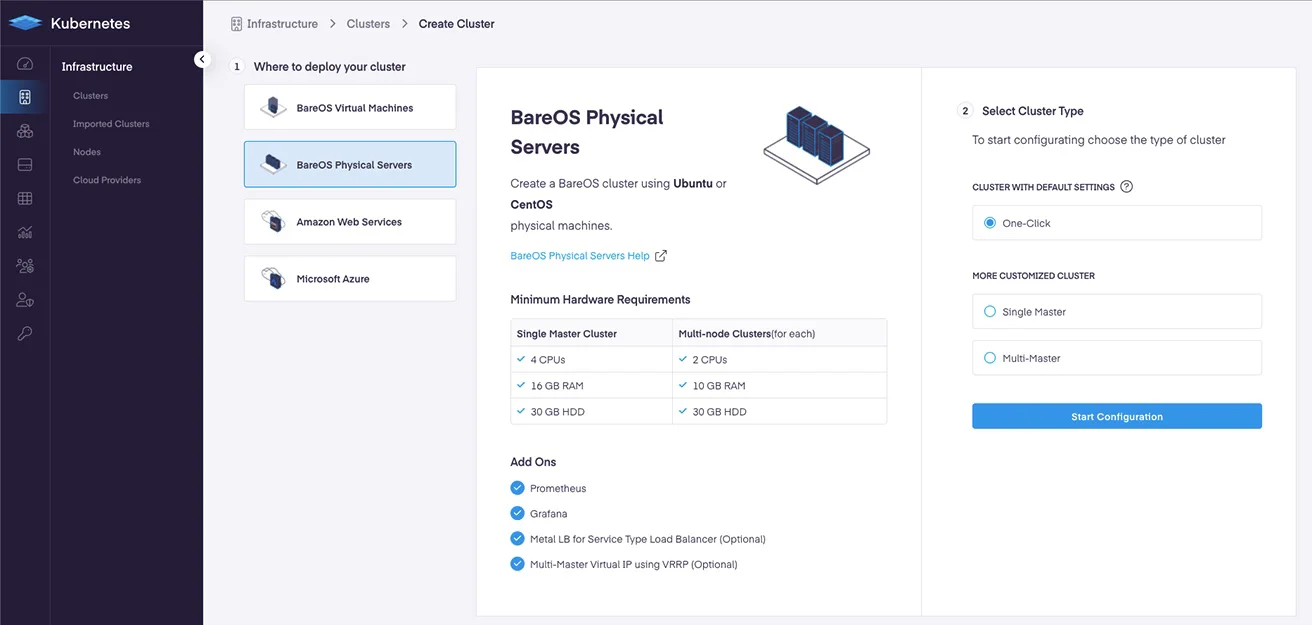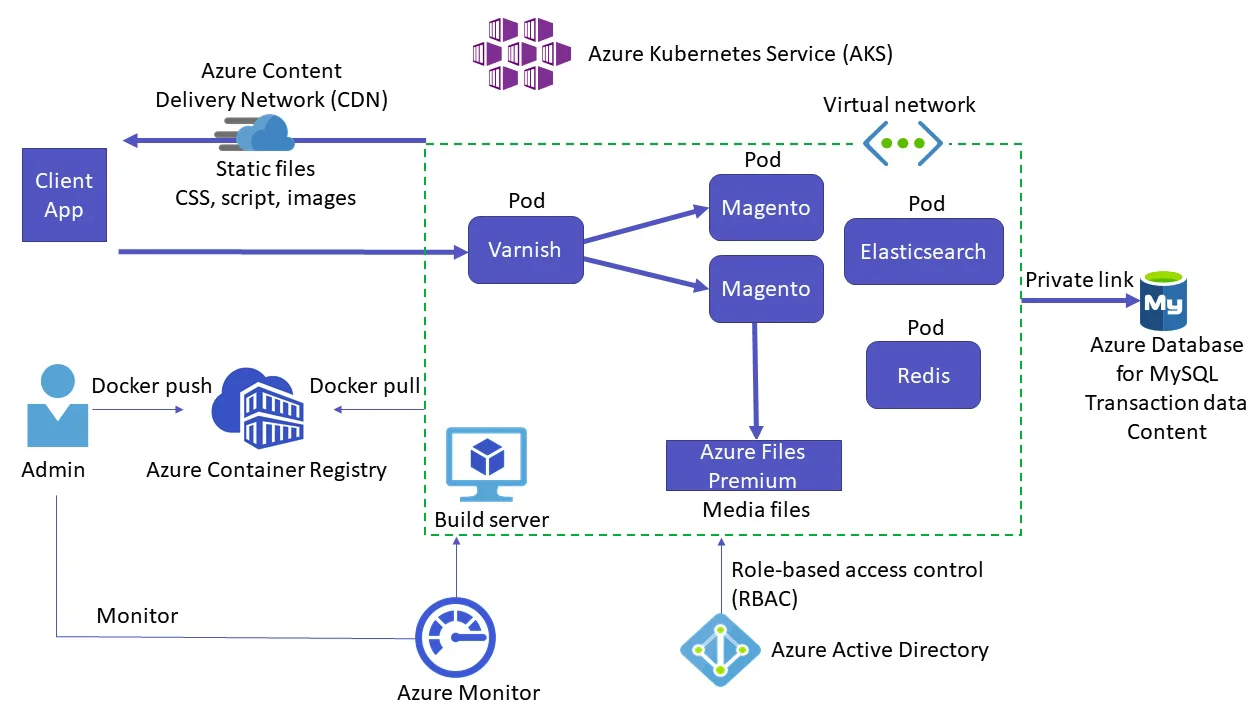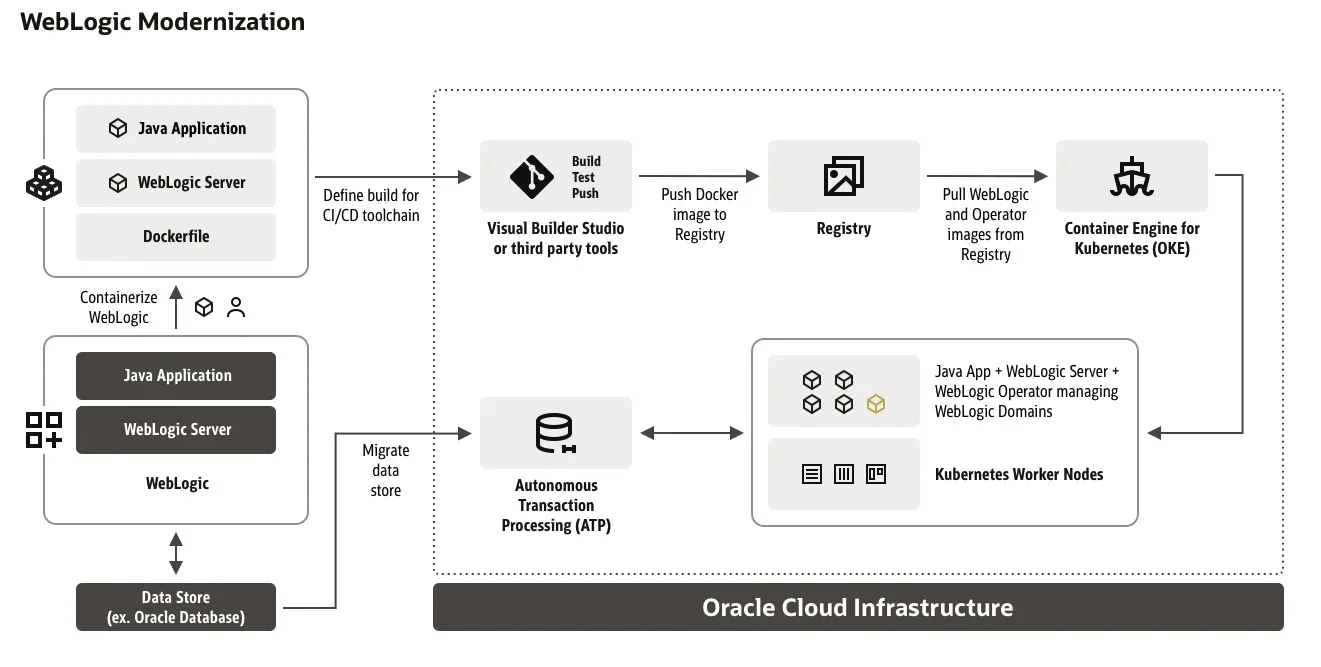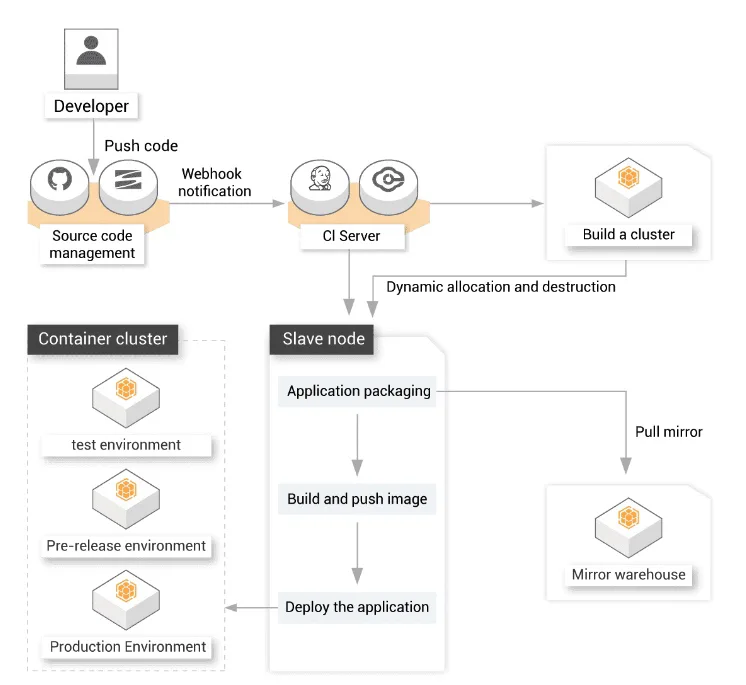Are you looking for the best Rancher alternatives? If yes, you have stumbled upon the right webpage. In this article, I will share a list of the best Rancher alternatives to replace Rancher.
So, without any further ado, let’s get started –
Rancher – What do we know about it?💁
Rancher is a well-known platform as a service (PaaS) tool that lets you run, build and deploy containerized applications across multiple environments, such as on your on-premise infrastructure, public cloud, or a hybrid server.
One of the best things about Rancher is its easy-to-use, simple interface. This easy-to-use interface makes it extremely easy for users to deploy their applications faster and more conveniently. This is also one of the main reasons Rancher is gaining such popularity.
It also boasts an in-built container management tool along with the container manager. It lets you use Docker Swarm and Kubernetes on the top Rancher, allowing you to extend its functionalities. It also supports third-party app integration with a massive collection of ready-made applications.
Even though Rancher has some really good features and functionalities, it has some drawbacks too. For instance, it is not a 100% ready-made solution, as it only lets you deploy applications from Docker images. Further, it also has some limitations with database scaling.
These are some of the reasons people are looking for Rancher alternatives. The good thing is that plenty of tools can be used to replace Rancher. Below, we have reviewed some of the best ones you can use.
Best Rancher Alternatives – Our Top Pick👌👌
1. OpenShift Container Platform – Rancher alternatives for building and scaling containerized applications
The first Rancher alternative on our list is the OpenShift Container Platform. It is also a PaaS owned and managed by Red Hat. OpenShift Container Platform is based on an open-source project named OpenShift, initiated and managed by Red Hat.
You can opt for the open-source OpenShift project for free. Still, you will have to manage everything there, and you will be required to have prior experience using containerization tools, especially OpenShift.
On the flip side, the OpenShift Container Platform is a powerful commercialized tool introduced by Red Hat as flagship software. It boasts a simple and intuitive user interface that lets you easily create, build, test, and deploy your applications directly to the cloud.
This Rancher alternative is known for its top-notch security and built-in monitoring feature. This takes the security of your applications to the next level while making it easy to monitor your deployments, containers, and other things.
It also boasts centralized policy management and many other compatibility tools.
OpenShift Container Platform creates Docker-style Linux containers based on Red Hat Enterprise Linux and Kubernetes.
This combination provides superb functionalities, features, and compatibility with applications. However, its drawback is that it only supports Red Hat Linux, Fedora, and CentOS.
This tool supports various programming languages, including Python, Ruby, Java, PHP, and Go. This allows you to write scripts and codes in the language you are most familiar with. To update pods, it uses DeploymentConfig, which is great but doesn’t support concurrent updates.
Compared to Rancher, the OpenShift Container Platform is more intuitive, easy to use, and offers more functionalities and features.
It further supports CI/CD pipelines, automating repetitive tasks and deploying your apps easy. The only drawback of this Rancher alternative is that it supports limited OS.
Rancher vs openshift:-
| Feature | Rancher | OpenShift |
|---|---|---|
| Deployment Models | Docker Swarm, Kubernetes, and custom | Kubernetes |
| Installation | Easy to install with a simple UI | Requires a bit more technical expertise to install |
| Ease of Use | Very user-friendly interface | User-friendly, but with a steeper learning curve |
| Scalability | Scales easily to handle large clusters | Scales easily to handle large clusters |
| High Availability | Built-in high-availability features | Built-in high-availability features |
| Security | Provides security through Kubernetes and Docker | Provides security through Kubernetes and Docker |
| Integration | Integrates with various third-party tools | Integrates with various third-party tools |
| Customization | Customizable with the ability to add plugins | Customizable with the ability to add plugins |
| Support | Excellent community support and documentation | Excellent community support and documentation |
| Pricing | Free and open source | Free and open source |
2. Nomad – Rancher alternatives To Make Orchestration Easy
Unlike OpenShift Container Platform or Rancher, Nomad is not a PaaS. Instead, it is a fully-fledged lightweight container orchestration tool that enables you to build, manage and deploy your applications on cloud platforms.
The best thing about Nomad is its lightweight and easy use. Plus, it offers functionalities that let you quickly scale your workloads across different cloud platforms. The simple and intuitive GUI makes it easy to learn and use, even for beginners.
Nomad offers a common pool infrastructure that can be shared between multiple applications. You can use it on public clouds, on-prem infrastructure, or a hybrid server.
This tool mainly provides cluster management capabilities and container scheduling using bin-packing and optimized resource utilization.
The clusters created using Nomad use Consul for configuration and management. It follows an evaluation process to change the node’s current state to match the desired state of the node and automates the workload schedule accordingly.
It further boasts self-healing capabilities and regularly checks nodes for emergent states. Nomad starts a new evaluation whenever a node fails and tries to fix the node’s emergent state to meet the system’s desired state.
In situations of failure, this can help retrieve all the essential data and auto-start the applications.
Besides that, Nomad also supports plugin integrations, GPU acceleration, multi-cloud management, scalability to up to clusters of 10000 nodes, full integration with the HashiCorp ecosystem, and much more.
If you are willing to manage your clusters independently, Nomad can be a great Rancher alternative.
Rancher vs Nomad:-
| Feature | Rancher | Nomad |
|---|---|---|
| Deployment Models | Kubernetes, Docker Swarm, and custom | Custom |
| Installation | Easy to install with a simple UI | Easy to install with a simple CLI |
| Ease of Use | Very user-friendly interface | User-friendly, with a steeper learning curve |
| Scalability | Scales easily to handle large clusters | Scales easily to handle large clusters |
| High Availability | Built-in high-availability features | Built-in high-availability features |
| Security | Provides security through Kubernetes and Docker | Provides security through Vault integration and ACLs |
| Integration | Integrates with various third-party tools | Integrates with various third-party tools |
| Customization | Customizable with the ability to add plugins | Highly customizable with the ability to add custom jobs |
| Support | Excellent community support and documentation | Good community support and documentation |
| Pricing | Free and open source | Free and open source |
3. VMWare Tanzu Kubernetes Grid
VMWare Tanzu Kubernetes Grid (Visit Here), aka TKG, is a Kubernetes runtime that lets you run and manage containers on the cloud.
The TKG containers are quite scalable, which makes it great for building all small to mid-sized applications. It boasts a subscription-based model where the cost varies based on your requirements.
It is based on open-source Kubernetes distribution, meaning you get all the functionalities of Kubernetes with a very simple and easy-to-use UI and support of VMWare.
It lets you easily configure, manage and maintain production-ready Kubernetes clusters.
It boasts enterprise-wide management functionalities, allowing organizations to easily deploy and manage mid to large-scale Kubernetes. It supports automated multi-cluster operations and keeps your workloads fully isolated.
It also lets you automate lifecycle management to focus more on things that require your attention.
You can install and run TKG on any public cloud, on-prem infrastructure, or edge. However, to install it on your on-prem infrastructure, you must first install the Tanzu Kubernetes Grid CLI.
TKG boasts a very simple and user-friendly GUI that makes it easy to learn and use. The user interface is quite intuitive. It further integrates with CI/CD pipelines, including CloudBees CI, Jenkins, GitLab CI/CD, Nirmata, and Concourse CI.
It further lets you install add-ons that can help you let functionalities. For example, you can use the Tanzu Mission Control to monitor, operate and manage your clusters. As a centralized management tool, it provides cluster lifecycle, policy and data protection management, and more.
It also provides 24/7 customer support for production guidance for Kubernetes management, and you can get architectural support from VMWare Customer Reliability Engineering Team. You can further contact the VMWare Pivotal Labs to change the build type of your applications.
4. Google Kubernetes Engine
Google Kubernetes Engine is a CaaS (container as a service) platform that lets you easily create, resize, manage, update, upgrade, and debug container clusters. Google Kubernetes Engine, aka GKE, was the first managed Kubernetes service, and therefore, it is highly regarded in the industry.
GKE is one of my top picks for Rancher alternatives because Google is the original developer of Kubernetes. Along with that, Google is heavily involved in improving and developing Kubernetes. Therefore, they know what they are offering.
GKE uses Google infrastructure to deploy, manage, and scale your containerized applications. The best thing about this is that you can access the advanced Google Cloud Platform management functions on top of Google’s security.
Another good thing about using GKE is that it seamlessly integrates with other Google products. It further integrates with the Kubernetes dashboard, letting you easily monitor and manage your different clusters, containers, and applications.
You can use Google Cloud Build to design your container. You can easily use container images from other source code repositories to build and design your container.
GKE also lets you store your container images in Google Container Repository to reuse them in the future.
Some of the major benefits of GKE include the ability to create single-click clusters, data encryption, vulnerability scanning, integrated cloud monitoring, auto-repair and auto-upgrade functionalities, and more.
GKE also helps you connect with site reliability engineers who can help you with all sorts of issues, such as handling runtime errors, maximizing application performance, and more. Overall, GKE is an amazing CaaS Rancher alternative that is worth considering.
Rancher vs Google Kubernetes Engine:-
| Feature | Rancher | GKE |
|---|---|---|
| Deployment Models | Kubernetes, Docker Swarm, and custom | Kubernetes |
| Installation | Easy to install with a simple UI | Easy to install with a simple UI |
| Ease of Use | Very user-friendly interface | User-friendly, with a steeper learning curve |
| Scalability | Scales easily to handle large clusters | Scales easily to handle large clusters |
| High Availability | Built-in high-availability features | Built-in high-availability features |
| Security | Provides security through Kubernetes and Docker | Provides security through Google Cloud IAM |
| Integration | Integrates with various third-party tools | Integrates with other Google Cloud services |
| Customization | Customizable with the ability to add plugins | Customizable, but not as much as Rancher |
| Support | Excellent community support and documentation | Good community support and documentation |
| Pricing | Free and open source | Pay-as-you-go model |
5. Platform9 Managed Kubernetes
Platform9 is a managed SaaS Rancher alternative on our list that provides Kubernetes services for the edge, on-prem infrastructure, public clouds, and hybrid clouds.
If you already have your clusters on AKS or EKS, Platform9 lets you import them and bring them to its management system smoothly.
It offers a very intuitive and simple GUI, making it easy to deploy, manage and operate clusters and nodes. You can see detailed information on the dashboard about everything essential, such as total clusters, nodes, pods, deployments, users, services, and more.
You can also see clusters you created using Platform9, AWS native clusters, Azure native clusters, BareOS, and more. Platform9 lets you use multiple versions of Kubernetes simultaneously, making the cluster management process smooth and easier.
Platform9 offers a free plan where you can build two clusters with up to eight nodes with the help of ArgoCD. However, the paid plans start at $4/vCPU/month for the public cloud, and for on-premise infrastructure, you have to pay $160/node/month.
Platform9 offers auto-scaling and load balancer services for public clouds that help you avoid wasting money when your clusters and applications have low demands. You can further integrate it with public cloud DNS to access centralized DNS management.
It further offers many add-ons that make managing your clusters easy. Some popular add-ons include Core DNS, MetalLB, Calico CNI, Flannel CNI, Kubernetes Dashboard, Luigi Advanced Networking, and more.
The Platform9 community is still young; therefore, you should not expect much from it. However, it offers 24/7 customer support with its premium plan, which can be quite helpful. But overall, I don’t think you will have any issues with it.
6. Azure Kubernetes Service
Azure Kubernetes Service is a fully managed container orchestration service based on Kubernetes. However, unlike GKE, AKS doesn’t attract cluster management, control plane, and master node fee.
Instead, you must pay for the network resources and the worker nodes, making it quite cost-effective.
AKS was initially known as Azure Container Service that used to offer support for the Docker Swarm and Apache Mesos along with Kubernetes. But after seeing the popularity of Kubernetes, Azure decided to offer it as a product dedicated to Kubernetes only.
It makes it easy to deploy, monitor, and manage containerized applications. This Rancher alternative would be a perfect choice if you already have your workloads on Azure. It integrates well with Microsoft products, including Azure AD, DevOps, and GitHub.
AKS also offers a free master node. There are some limitations, but this is something to keep in mind. It further supports the integration of many development tools, such as Helm and Draft.
It also supports the Bridge to Kubernetes function that lets you build microservice applications designed for Kubernetes.
AKS also offers the fastest upgrade of all Kubernetes versions and security patches. The security patches automatically get installed, while general auto-updating is not fully automatic. You have to trigger components to update them to the newer version.
However, it offers the automatic node repair functionality, which helps to keep your nodes healthy, available and stable. It further offers Azure Advisor, a support tool that helps you optimize performance and save resources based on your configuration and requirements.
The Bridge to Kubernetes allows you to code, debug, and test your codes directly on your machine as it is connected to your cluster.
If you want a cost-effective managed Kubernetes service, AKS can be a good Rancher alternative.
7. Rackspace
Rackspace is a managed Kubernetes as a service (KaaS) platform that offers fully configured, tested, and validated managed Kubernetes services that can be scaled at the enterprise level. It offers the provision of Kubernetes clusters in a cloud environment.
It provides consistent functionalities and services across all your clusters to offer scalable development. It comes with the MPK that lets you easily design and deploy your clusters and applications. It further helps in VM deployments and managing upgrades.
Rackspace also promises to offer top-notch security. It ensures the security of everything from your infrastructure to the Kubernetes cluster, including containers, nodes, and other services. It covers security, so you don’t have to worry about it.
Rackspace is entirely based on Kubernetes, which packs all its functionalities and features. It further helps in scaling your Kubernetes containers to meet the requirements. This thing makes it a great choice for all enterprise-scale applications.
This tool supports APIs, allowing you to access hosted Kubernetes services directly from your dashboard. The UI is also quite intuitive and user-friendly. It integrates well with CI/CD tools such as Jenkins, Circle CI, TeamCity, and more.
It launched its KaaS in 2018, meaning its community is quite young compared to other managed Kubernetes services. Therefore, expecting much from the community would not be a good idea.
However, you get access to detailed documentation that can help you learn how to use it. It also boasts a chat, ticket system, and call support to connect with customer support.
8. Docker Swarm
Next, we have Docker Swarm on our alternatives to rancher list. Docker Swarm is a lightweight container orchestration tool that lets you create, deploy and manage containerized applications. It is even one of the most popular container orchestration tools after Kubernetes.
Swarm is a function that lets you build and manage clusters on the Docker Engine on top of the Docker platform. Swarm is a native Docker feature you must manually enable to use its functionalities.
Once you enable this feature, you can create, deploy and manage clusters using the Docker CLI. Swarm makes it easy to manage containers, coordinate them and assign tasks to their groups. You can further use it to check container health, lifecycles, and more.
Compared to Kubernetes, Docker Swarm is less technical and, therefore, suited for mid-scale deployments. It makes it easy to roll updates and scale containers per the load and required resources. It makes the deployment process much faster with easy scaling.
By default, Docker Swarm lacks a dashboard. However, you can integrate third-party tools to get rid of this. Similarly, the automatic scaling function requires some improvements.
9. Oracle Container Engine
Oracle Container Engine is another fully managed container orchestration platform offered by Oracle. It is based on the latest releases of Kubernetes, offering you all the latest functionalities and features of Kubernetes.
The best thing about Oracle Container Engine is that it doesn’t charge you anything for cluster management or other features. Instead, you must pay for the resources you consume for your containerized application workloads, such as storage and worker nodes.
Deploying clusters using Oracle Container Engine is easy. Plus, it makes it quite easy to deploy, manage and scale containerized applications.
It further lets you integrate OKE tools to enhance security, automation, monitoring, and more functionalities.
It also integrates easily with Oracle products like the WebLogic Server, the OCI Service Operator, and more. It also boasts auto-scaling features for clusters and pods, which is great.
Oracle Container Engine also supports ARM, allowing you to build and run native mobile applications. For this purpose, you can use the Ampere A1 Computer platform available in the OCI. It has also enhanced its support for GPUs, meaning you can build applications that rely on GPU acceleration for better performance.
It supports web-based REST API and CLI that you can use to automate Kubernetes operations such as auto-scaling, cluster creation, and more. The automatic Kubernetes upgrade function lets you quickly upgrade your clusters with zero downtime, keeping them up to date for functionalities and features.
It also boasts self-healing capabilities, meaning whenever any node fails, it automatically provisions new worker nodes to ensure the availability of clusters. The worker nodes are based on Docker container runtime with full support for SSH.
10. Alibaba Cloud Container Service for Kubernetes
Lastly, our list includes Alibaba Cloud Container Service (Visit Here) for Kubernetes. It is another fully managed CaaS platform that lets you deploy, manage, and scale your containerized applications on Alibaba Cloud. It has a pay-as-you-go pricing model, meaning you will be billed for the items your cluster uses.
ACK has the virtualization, storage, security, and networking capabilities that let you deploy your containerized applications in high-performance and easily scalable containers. It further provides full lifecycle management functions for enterprise-scale containerized applications.
The GUI of ACK makes it easy to create, deploy and expand Kubernetes clusters directly from your container service console. You can also upgrade your Kubernetes clusters to the newest version with a single click.
It seamlessly integrates with VPCs to offer a secure, high-performance deployment for hybrid cloud scenarios. It further offers integration with Server Load Balancer (SLB) to let you access all your containers without any issues.
It also supports horizontal pod auto-scaling for your deployments using a cluster auto-scaling pipeline. The workloads will scale automatically; however, for resources, you have to ensure that the resources meet your workloads’ scaling requirements.
When you opt for a paid ACK plan, you get access to 24/7 available online customer support. This customer support can help you with all container-related questions, such as scaling your clusters and optimizing your containers for better performance.
Rancher vs k3s:-
Both Rancher and k3s are excellent Kubernetes-based container orchestration platforms.
While Rancher provides a user-friendly interface and supports multiple deployment models, k3s is highly customizable and is designed for smaller-scale clusters. Additionally, k3s prioritizes security through minimalism and encryption.
| Feature | Rancher | k3s |
|---|---|---|
| Deployment Models | Kubernetes, Docker Swarm, and custom | Kubernetes |
| Installation | Easy to install with a simple UI | Easy to install with a simple CLI |
| Ease of Use | Very user-friendly interface | User-friendly, with a steeper learning curve |
| Scalability | Scales easily to handle large clusters | Scales easily to handle small to medium clusters |
| High Availability | Built-in high-availability features | Built-in high-availability features |
| Security | Provides security through Kubernetes and Docker | Provides security through minimalism and encryption |
| Integration | Integrates with various third-party tools | Integrates with various third-party tools |
| Customization | Customizable with the ability to add plugins | Highly customizable with the ability to add custom modules |
| Support | Excellent community support and documentation | Good community support and documentation |
| Pricing | Free and open source | Free and open source |
Rancher vs Kubernetes:-
both Rancher and Kubernetes are excellent container orchestration platforms. While Rancher provides a user-friendly interface and supports multiple deployment models, Kubernetes is more customizable and provides a broader range of security features.
Additionally, Kubernetes has a steeper learning curve, but it is more widely adopted and has a large community of users and contributors.
| Feature | Rancher | Kubernetes |
|---|---|---|
| Deployment Models | Kubernetes, Docker Swarm, and custom | Kubernetes |
| Installation | Easy to install with a simple UI | Requires technical expertise for installation |
| Ease of Use | Very user-friendly interface | Steep learning curve for beginners |
| Scalability | Scales easily to handle large clusters | Scales easily to handle large clusters |
| High Availability | Built-in high-availability features | Built-in high-availability features |
| Security | Provides security through Kubernetes and Docker | Provides security through Kubernetes and other tools |
| Integration | Integrates with various third-party tools | Integrates with various third-party tools |
| Customization | Customizable with the ability to add plugins | Highly customizable with the ability to add extensions |
| Support | Excellent community support and documentation | Good community support and documentation |
| Pricing | Free and open source | Free and open source |
📗FAQ
Is there a free version of Rancher?
Yes, there is a free version of Rancher called Rancher Community Edition. It provides most of the features of the commercial version but with some limitations on support and scale.
Rancher Alternatives
If you are looking for an alternative to Rancher, several options are available such as OpenShift, Kubernetes, Docker Swarm, and Nomad.
Each tool has its strengths and weaknesses, and the choice depends on your specific needs and requirements.
What is the difference between Rancher and OpenShift?
Rancher and OpenShift are popular container orchestration platforms, but there are some key differences between the two. OpenShift is based on Kubernetes but provides additional enterprise security, compliance, and governance features.
On the other hand, Rancher is a more lightweight and flexible platform that supports multiple orchestrators, including Kubernetes.
What is the difference between Rancher and K3s?
K3s is a lightweight Kubernetes distribution designed for edge computing and low-resource environments.
On the other hand, Rancher is a full-fledged container management platform that can be used with different orchestrators, including K3s.
Is Rancher a replacement for Docker?
No, Rancher is not a replacement for Docker. It is a container management platform that can be used with different container runtimes, including Docker.
Do you need Rancher and Kubernetes?
While Rancher can be used with other orchestrators, Kubernetes is Rancher’s most popular and widely used orchestrator. Rancher provides a user-friendly interface and additional features on top of Kubernetes.
What is the difference between Docker and Rancher?
Docker is a container runtime that can package and run applications in containers. On the other hand, Rancher is a container management platform that provides additional features such as multi-cluster management, centralized authentication, and role-based access control.
What happened to Rancher OS?
Rancher OS was a minimalist operating system designed to run Docker containers. However, it has been deprecated and is no longer actively developed or maintained.
What is the difference between Rancher and Kubernetes?
Kubernetes is a popular container orchestrator that provides a wide range of container management and orchestration features.
On the other hand, Rancher is a container management platform that provides additional features such as multi-cluster management, centralized authentication, and role-based access control.
Is OpenShift outdated?
No, OpenShift is not outdated. It is a popular container platform that provides enterprise-grade features and is widely used in production environments.
Why is tanzu better than OpenShift?
Tanzu and OpenShift are both popular container platforms with their strengths and weaknesses. Tanzu is considered better than OpenShift regarding scalability, extensibility, and flexibility.
Why OpenShift is better than Kubernetes?
OpenShift is not necessarily better than Kubernetes but provides additional enterprise features such as security, compliance, and governance. OpenShift is based on Kubernetes and provides a user-friendly interface and additional features on top of Kubernetes.
What is the disadvantage of K3s?
One of the main disadvantages of K3s is that it is a lightweight distribution of Kubernetes and may not provide all the features and capabilities of a full-fledged Kubernetes cluster.
Should I use K3s for production?
K3s can be used for production environments, depending on your specific use case and requirements.
K3s is designed for edge computing and low-resource environments and may not be suitable for large-scale production deployments.
What is K3s good for?
K3s is good for edge computing and low-resource environments where you must deploy and manage Kubernetes clusters efficiently and quickly.
It provides a lightweight and easy-to-use distribution of Kubernetes with a small footprint and low resource requirements.
Closing Comments on rancher alternatives
There you have it – a list of the ten best Rancher Alternatives.
Rancher is undoubtedly one of the best and easiest services you can opt for to run Kubernetes containers across multiple environments. You can use Rancher on your on-premise infrastructure, public cloud, or a hybrid server.
It offers cross-host networks, container load balancing, multi-tenancy, user management, persistent storage services, and more. On top of that, it comes with built-in security features that take the security of your Kubernetes clusters to the next level.
However, it is not the only tool of its kind. The internet is filled with dozens of amazing tools that you can use to replace Rancher. The list mentioned above contains the ten best of them.

























